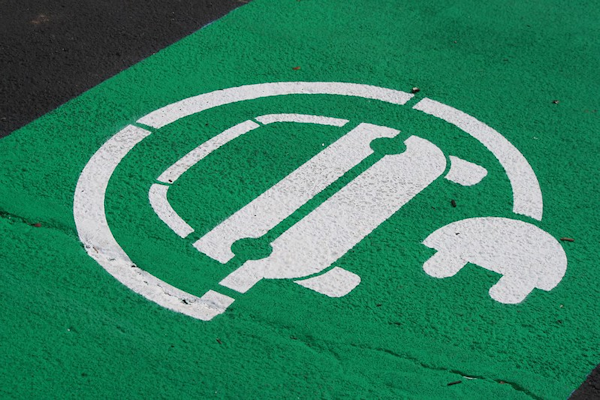SEJournal Online is the digital news magazine of the Society of Environmental Journalists. Learn more about SEJournal Online, including submission, subscription and advertising information.
 |
 |
| EV sales are growing in many markets. But the United States is lagging behind some other parts of the world. Photo: Noya Fields via Flickr Creative Commons (CC BY-SA 2.0 DEED). |
Issue Backgrounder: Electric Vehicles Will Be Burning Rubber in 2024
By Joseph A. Davis
 |
Electric vehicles will be a major story in 2024 and beyond for environmental journalists — and their audiences — and not just because of the big uptick in sales but also because of the complications they bring.
Even though the shift from petroleum-burning cars to EVs is going forward with seemingly unstoppable momentum, there will be years of conflict and uncertainty ahead. Whether the transition will be enough (and fast enough) to help alleviate global heating remains to be seen.
Many car and truck makers have already made huge financial commitments. EV sales are growing in many markets. But the United States is lagging behind some other parts of the world.
EV sales growing exponentially worldwide
Global sales of electric vehicles have been growing exponentially, according to the International Energy Agency. In a recent report, IEA said that 14% of all new cars sold were electric in 2022, up from around 9% in 2021 and less than 5% in 2020.
Estimates of future sales present a “bright outlook,” the agency added. Worldwide sales for all of 2023 could reach 14 million.
The bad news is that the EV market is not geographically uniform.
China is the nation making the fastest progress, accounting for some 60% of global sales and more than half of the EVs on the road today. In Europe, the second-largest market, EV sales increased by over 15% in 2022, with more than one in every five cars sold. In the United States, the third-largest market, electric car sales increased by 55% in 2022, a share of 8%.
Accelerating buyer interest in EVs
is high gasoline prices. The price of oil
has been going up in recent years
and is now comparatively high.
One factor accelerating buyer interest in EVs is high gasoline prices. The price of oil (which we are not so foolish as to predict) has been going up in recent years and is now comparatively high, in the neighborhood of $90 per barrel.
But a lot of things could affect the price of oil — wars in Ukraine and in the Mideast, and the geopolitics of OPEC, Saudi Arabia and Russia — and the U.S. government can do very little about it.
Political fracas
In the United States, the push toward EVs (like many other things) has often been deeply politicized. To simplify: Oil interests, some carmakers and many Republicans don’t want to encourage EVs. On the other hand, environmentalists and Democrats want the government to support the transition to EVs, if only because of climate heating.
The intensity of this conflict reflects the bitterness of the partisan conflict we see today in the U.S. House of Representatives.
Regulation is one way the federal government can push electric vehicles. Some of the GOP reluctance on EVs is really opposition to regulation of any kind. But there are also many GOPers who still don’t “believe” in the science of climate change.
That’s arguably why the Inflation Reduction Act, passed by Congress and signed by President Biden in August 2022, relies on tax incentives rather than regulation. More on this later.
Another strong force in U.S. politics is regional jockeying over fuel sources for purely monetary reasons. Oil and fossil fuel states tend to support things that run on gasoline. But interstate conflict also is driven by air pollution — which is why California is miles ahead of other states in mandating EVs.
International EV race
Some journalists like horse-race stories. To extend the metaphor, this may be horse-and-buggy journalism in our high-tech mediasphere.
There may be more important things
than winning the international EV race,
but if there one, China is winning.
OK, there may be more important things than winning the international EV race, but there is definitely money at stake. Tens of billions. Dollars or yuan. Place your bets.
If there is an EV race, China is winning. Tesla, which started in pole position, is manufacturing and selling EVs in China right now. Tesla sold 74,073 China-made cars in September 2023 alone.
But Tesla sales of China-made EVs are dropping, while sales from Chinese firms are still going up. One result: lower prices.
If competitiveness drives EV prices down, that may be a good thing — not just for companies or nations, but for the planet.
New law tax breaks
Getting the Inflation Reduction Act passed in the United States was a Byzantine political saga too convoluted to explain fully here. Joe Manchin (D-W.Va.), the senator from coal country and tiebreaker-in-chief, killed any new regulatory approach to EV promotion. But he did allow the bill to include tax incentives.
It’s not yet clear whether those incentives will help EV sales more than hurt them. That’s partly because they apply primarily to U.S.-made cars — reflecting President Joe Biden’s pro-union and buy-American principles. It’s a complex equation, but even European EVs end up with the short straw.
It is, however, becoming easier to get tax breaks for EVs, as dealers are allowed to take the tax break directly off of the sale price, and domestic EV supply chains include more batteries made in America.
Batteries and minerals
The success of EVs in the United States (and worldwide) depends on adequate supplies (and thus low prices) of some key minerals — most notably lithium for batteries.
It ultimately depends on ongoing improvements in battery technology as well. U.S. solutions to these challenges will still be in progress during 2024.
U.S. domestic supplies of
lithium are not yet enough
to support a domestic industry.
U.S. domestic supplies of lithium are not yet enough to support a domestic EV industry. In 2023, there was still only one lithium mine operating in the states, the Silver Peak in Nevada run by Albemarle Corp.
About 95% of the world’s current lithium production comes from Australia, Chile, China and Argentina.
EV jobs and unions
Another dimension of the complex politics of EVs involves unions in the United States.
The United Auto Workers union is, as of this writing, in the middle of a strike against major U.S. automakers and, by extension, some of their suppliers.
The UAW is not against EVs per se; what they care about is wages and job security. But these things are interwoven and are part of the talks. For example, the union considered it a win when the automakers agreed to put EV battery makers under the national contract.
Biden got some UAW love in September when he joined a UAW picket line, which may not only help him in carmaking states but could also help him and the unions in states where new battery plants are being started.
Former President Donald Trump visited Detroit, too. But he visited a nonunion plant and railed against Biden for supporting EVs. All this foreshadows the possibility that electric vehicles could be an important issue in any Biden-Trump presidential matchup.
EPA pollution rules key to EVs
Even without new legislation, the U.S. Environmental Protection Agency has the authority to regulate carbon pollution from cars and trucks (jointly with the National Highway Traffic Safety Administration).
The EPA has been trying to do this for years — amid strong political crosswinds and high-stakes court cases. In April 2023, the Biden EPA proposed strong regulations anew, and the lengthy process of finalizing them has begun.
The EPA has rightly called the newly proposed regs the “strongest-ever.” They cover more pollutants than just greenhouse gases. But if the regs are strong enough, they may also push carmakers to add more “zero-emission” EVs to their fleets and reduce the proportion of combustion vehicles.
If Biden wins the 2024 presidential election, the EPA may have another four years to finalize these rules. If Trump wins, he would likely reverse the EPA rules, just as he did during his first term.
[Editor’s Note: For more on electric vehicles, see the recent TipSheet, “Burgeoning National EV Trend Helps Drive Local Environment, Climate Stories,” as well as Issue Backgrounders on “Carmakers Map Out Shifting Road Ahead” and “Does Climate’s Future Depend on Better Batteries?” And get up-to-date transportation headlines from EJToday.]
Joseph A. Davis is a freelance writer/editor in Washington, D.C. who has been writing about the environment since 1976. He writes SEJournal Online's TipSheet, Reporter's Toolbox and Issue Backgrounder, and curates SEJ's weekday news headlines service EJToday and @EJTodayNews. Davis also directs SEJ's Freedom of Information Project and writes the WatchDog opinion column.
* From the weekly news magazine SEJournal Online, Vol. 8, No. 37. Content from each new issue of SEJournal Online is available to the public via the SEJournal Online main page. Subscribe to the e-newsletter here. And see past issues of the SEJournal archived here.












 Advertisement
Advertisement 



